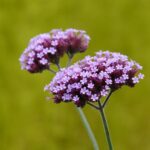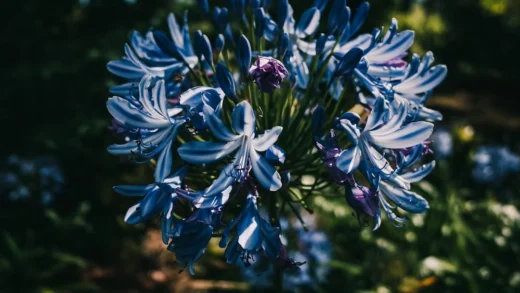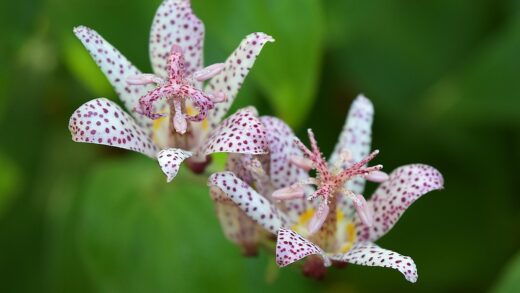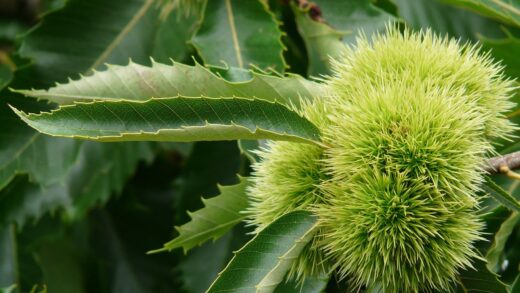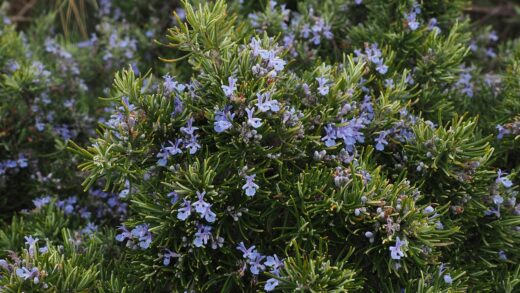Caring for dahlias is a rewarding endeavor that brings a spectacular display of color and form to any garden from mid-summer until the first frost. These stunning flowers, native to Mexico, have captured the hearts of gardeners worldwide with their incredible diversity in size, shape, and hue. Proper care is essential to unlock their full potential, ensuring robust growth and a profusion of blooms. This involves a consistent routine of watering, feeding, and monitoring for any signs of distress. By understanding the fundamental needs of the dahlia, you can cultivate plants that are not only healthy and vigorous but also produce an abundance of breathtaking flowers.
Dahlias thrive in well-drained, fertile soil, and preparing the planting site is the first step towards a successful season. Before planting, it is highly beneficial to amend the soil with well-rotted compost or manure to improve its structure and nutrient content. This enrichment provides a strong foundation for the tubers to establish a healthy root system, which is crucial for nutrient uptake and overall plant stability. A soil pH between 6.5 and 7.0 is ideal for dahlias, so it may be necessary to perform a soil test and adjust the pH accordingly. Good soil preparation not only supports initial growth but also helps to prevent waterlogging, a condition that can lead to tuber rot.
Once planted, consistent moisture is key, especially during the active growing season when the plants are developing foliage and flower buds. However, it’s a delicate balance, as overwatering can be just as detrimental as underwatering. The soil should be kept consistently moist but never waterlogged. A good practice is to water deeply once or twice a week, depending on weather conditions, allowing the soil to dry out slightly between waterings. Using a soaker hose or drip irrigation can be particularly effective as it delivers water directly to the root zone, minimizing moisture on the leaves which can encourage fungal diseases.
As the dahlia plants grow, providing physical support becomes increasingly important, particularly for the larger-flowering and taller varieties. The weight of the blooms, combined with wind and rain, can easily cause the hollow stems to bend or break. Placing a sturdy stake next to each tuber at planting time is the most effective method, as this avoids damaging the root system later on. As the plant grows, you can loosely tie the main stem to the stake at regular intervals using soft garden twine or plant ties. For multi-stemmed or bushier varieties, a tomato cage or a system of stakes and twine can provide more comprehensive support.
Throughout the growing season, regular deadheading is a vital task that encourages continuous blooming. By removing spent flowers, you prevent the plant from diverting its energy into seed production and instead redirect that energy into producing more blooms. Simply snip off the faded flower head along with its stem, cutting back to the nearest set of leaves or a lateral bud. This simple act not only improves the plant’s appearance but can significantly extend the flowering period, ensuring a vibrant display of color in the garden well into the autumn months.
More articles on this topic
Site selection and soil preparation
Choosing the right location for your dahlias is paramount to their success, as these plants have specific requirements for sunlight and protection. Dahlias are sun-loving plants and require a minimum of six to eight hours of direct sunlight each day to produce abundant blooms and strong, sturdy stems. An open, sunny spot in the garden is ideal, but they will appreciate some light afternoon shade in exceptionally hot climates to prevent the flowers from fading and the foliage from scorching. It is also wise to select a location that offers some protection from strong winds, which can easily damage the tall, bloom-laden stems of many dahlia varieties.
The quality of the soil is another critical factor that directly influences the health and vigor of your dahlia plants. They prefer a rich, well-drained soil with a slightly acidic to neutral pH, ideally between 6.5 and 7.0. Heavy clay soils should be amended to improve drainage, as dahlias are susceptible to tuber rot in waterlogged conditions. Incorporating organic matter such as compost, well-rotted manure, or leaf mold will not only improve the soil structure but also provide a slow-release source of essential nutrients. Sandy soils, on the other hand, will benefit from the addition of organic matter to help retain moisture and nutrients.
Before planting, it is essential to prepare the soil bed thoroughly to create an optimal growing environment for the tubers. Begin by clearing the area of all weeds and debris, then loosen the soil to a depth of at least twelve inches using a garden fork or tiller. This deep cultivation helps to break up any compacted soil, allowing the roots to penetrate easily and access water and nutrients more effectively. This is also the perfect time to incorporate your chosen soil amendments, spreading a generous layer over the surface and working it into the loosened soil.
Finally, consider the long-term health of your soil and plants by practicing crop rotation if you are planting dahlias in the same garden area year after year. Continuously growing the same type of plant in the same spot can deplete specific soil nutrients and lead to a buildup of soil-borne diseases and pests that target that particular plant family. By rotating the location of your dahlias every few years, you can help to maintain a healthier soil ecosystem. This simple practice disrupts the life cycles of pathogens and pests, reducing the risk of future problems and promoting more robust plant growth.
More articles on this topic
Staking and support
Providing adequate support for dahlia plants is not just an aesthetic consideration but a crucial aspect of their care, particularly for the taller and larger-flowered cultivars. The stems of dahlias, while appearing robust, are often hollow and can be surprisingly brittle, making them vulnerable to snapping under the weight of their own magnificent blooms or in the face of strong winds and heavy rain. Without proper support, you risk losing entire stems laden with flower buds, which is a devastating loss for any gardener. Implementing a support system early in the growing season is the key to preventing this kind of damage.
The most common and effective method for supporting individual dahlia plants is to use a single, sturdy stake. The ideal time to install the stake is at planting time, inserting it into the planting hole alongside the tuber. This proactive approach ensures that you do not accidentally pierce or damage the delicate tuber or its developing root system later in the season. The stake should be tall enough to support the anticipated final height of the plant, typically around five to six feet for most dinnerplate varieties. As the main stem grows, it should be loosely tied to the stake at intervals of about twelve inches using soft garden twine, plant clips, or strips of old fabric.
For dahlia varieties that produce a more bushy, multi-stemmed growth habit, a single stake may not be sufficient to support all the lateral branches. In these cases, using a grow-through plant support, such as a grid-style support or a tomato cage, can be a more practical solution. These supports are placed over the plant while it is still young, and the stems are allowed to grow up through the openings. This method provides a comprehensive framework of support for the entire plant, keeping the stems upright and preventing them from sprawling outwards under the weight of the flowers.
Another effective technique, especially for dahlias grown in rows or beds for cutting, is the ‘corralling’ or ‘cat’s cradle’ method. This involves driving sturdy stakes in at the corners of the bed and at intervals along the sides. Garden twine is then run between the stakes, creating a network of strings that encloses the plants and provides support on all sides. As the dahlias grow taller, additional layers of twine can be added, effectively creating a supportive grid that keeps the entire planting upright and organized. This method is particularly efficient for supporting a large number of plants at once.
Pruning and deadheading
Pruning and deadheading are two essential maintenance practices that play a significant role in shaping the growth of dahlia plants and maximizing their flower production. When dahlias are young, ‘pinching’ or ‘stopping’ the main growing tip is a highly recommended pruning technique. This is typically done when the plant is about twelve inches tall and has developed at least four sets of true leaves. By removing the central shoot just above a leaf node, you encourage the plant to produce side shoots from the leaf axils below the cut, resulting in a fuller, bushier plant with more flowering stems. While this may slightly delay the first bloom, the overall number of flowers produced throughout the season will be significantly higher.
As the dahlia plant matures and begins to flower, deadheading becomes a crucial and ongoing task. Deadheading is the process of removing faded or spent blooms before they have a chance to set seed. If old flowers are left on the plant, its energy will be diverted towards producing seeds, which signals to the plant that its reproductive cycle is complete, leading to a decline in flower production. By regularly removing the old flowers, you trick the plant into continuing its blooming cycle in an effort to produce seeds, thus ensuring a continuous and prolific display of color until the first frost.
The correct technique for deadheading is important to ensure you are encouraging new growth rather than just tidying up the plant. It is not enough to simply pull off the dead petals; the entire flower head and its stem should be removed. Trace the stem of the spent flower back to the point where it meets a main stem or a set of leaves. Make a clean cut just above a leaf node or a developing side bud, as this is where new growth and future flowers will emerge. This practice not only stimulates more blooms but also helps to maintain good air circulation through the plant, which can help to prevent fungal diseases.
In addition to pinching and deadheading, some gardeners also practice disbudding, particularly those growing dahlias for exhibition or for large, show-stopping blooms. Disbudding involves the removal of the smaller, secondary flower buds that form in the leaf axils just below the main, terminal bud on a flowering stem. By removing these side buds, you channel all of the stem’s energy into developing the single remaining terminal bud. This results in a significantly larger, more perfectly formed flower, although it does sacrifice the quantity of blooms on that particular stem.
Pest and disease management
Even with the best care, dahlias can sometimes fall prey to a variety of pests and diseases that can affect their health and appearance. Being vigilant and proactive in your management approach is key to keeping your plants healthy and thriving. Regularly inspecting your dahlias for any signs of trouble allows you to intervene early before a minor issue becomes a major infestation or infection. Common pests to look out for include aphids, spider mites, thrips, and slugs, while common diseases include powdery mildew, botrytis, and tuber rot.
Aphids are small, sap-sucking insects that often congregate on new growth and flower buds, causing distorted growth and weakening the plant. A strong jet of water from a hose can often dislodge them, but for more persistent infestations, insecticidal soap or neem oil can be effective. Spider mites, which thrive in hot, dry conditions, are tiny arachnids that can be difficult to see with the naked eye but their presence is often indicated by fine webbing on the undersides of leaves. Increasing humidity by spraying the foliage with water can help to deter them, and horticultural oils are an effective treatment.
Slugs and snails can be particularly damaging to young dahlia shoots as they emerge in the spring, capable of devouring an entire plant overnight. There are several control methods available, from physical barriers like crushed eggshells or copper tape around the base of the plants to organic slug baits containing iron phosphate. Earwigs are another common pest that can chew ragged holes in both the leaves and the petals of dahlia flowers. Traps made from rolled-up newspaper or small containers filled with oil can be effective at capturing them, and should be checked and emptied daily.
On the disease front, powdery mildew is one of the most common afflictions, appearing as a white, dusty coating on the leaves, especially during periods of high humidity and poor air circulation. Ensuring proper spacing between plants to promote good airflow is a key preventative measure. If an infection does occur, fungicides based on potassium bicarbonate or neem oil can be effective. Botrytis, or grey mold, is another fungal disease that thrives in cool, damp conditions, causing blooms and buds to rot. Removing any affected plant parts immediately and avoiding overhead watering can help to control its spread.
Overwintering preparation
As the growing season draws to a close and the first frosts loom, the focus of dahlia care shifts to preparing the tubers for their winter dormancy. Dahlias are not frost-hardy, and in climates where the ground freezes, the tubers must be lifted from the garden and stored indoors to survive the winter. This process is critical for preserving your dahlia collection and ensuring you have healthy tubers ready for planting the following spring. The first light frost is the signal to begin this process, as it will blacken the foliage but will not harm the tubers underground.
After the first frost has blackened the leaves, cut the dahlia stalks down to about four to six inches above the ground. This makes the tubers easier to handle and helps to signal the end of the growing season. It is advisable to leave the tubers in the ground for another week or two after cutting back the stalks. This period allows the ‘eyes’ on the tubers, from which next year’s growth will emerge, to mature and become more visible, which is particularly helpful when it comes to dividing them.
When you are ready to lift the tubers, do so with great care to avoid damaging them. Use a garden fork or spade, digging carefully in a wide circle around the base of the plant, about a foot away from the stalk. Gently lever the entire clump of tubers out of the ground, being mindful that the necks of the tubers, where they attach to the central stalk, are particularly fragile and can easily break. Once lifted, gently shake or brush off the excess soil from the clump; avoid washing them with a hose at this stage unless they are extremely caked with heavy, wet soil.
Once the tuber clump is lifted, it needs to be cured before being put into storage. This involves allowing the skin of the tubers to dry and toughen slightly, which helps to prevent them from rotting during storage. Place the clumps in a cool, dry, and frost-free location with good air circulation, such as a garage or shed, for a few days to a week. They can be placed upside down initially to allow any excess moisture to drain from the hollow stems. After this curing period, the tubers are ready to be divided, if desired, and packed away for their long winter rest.














